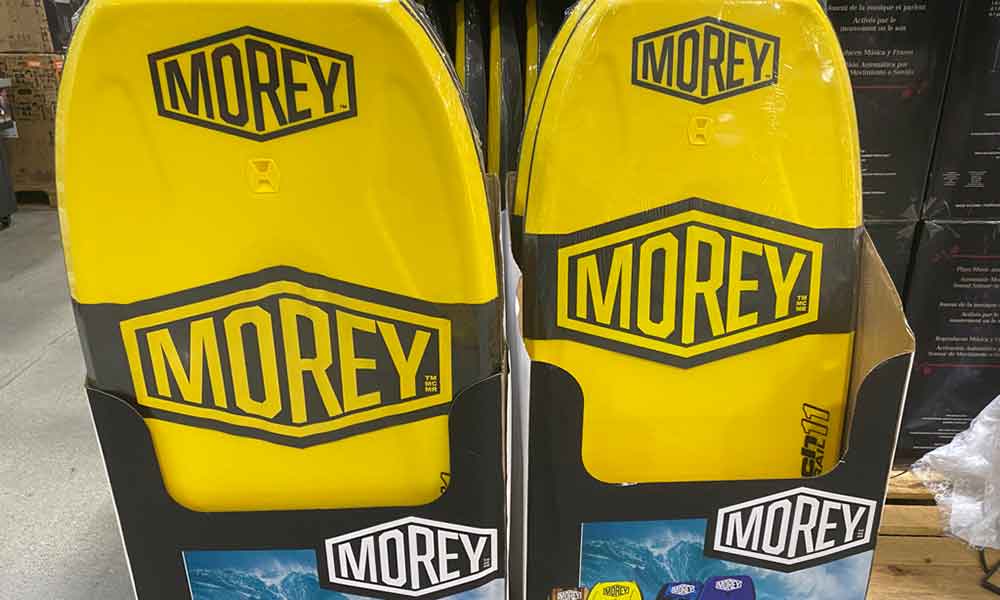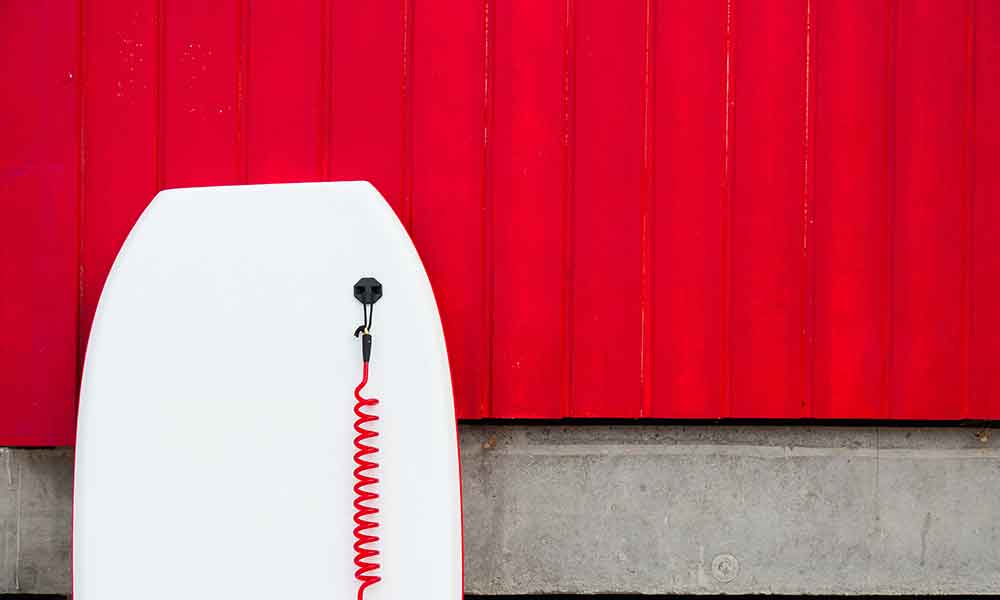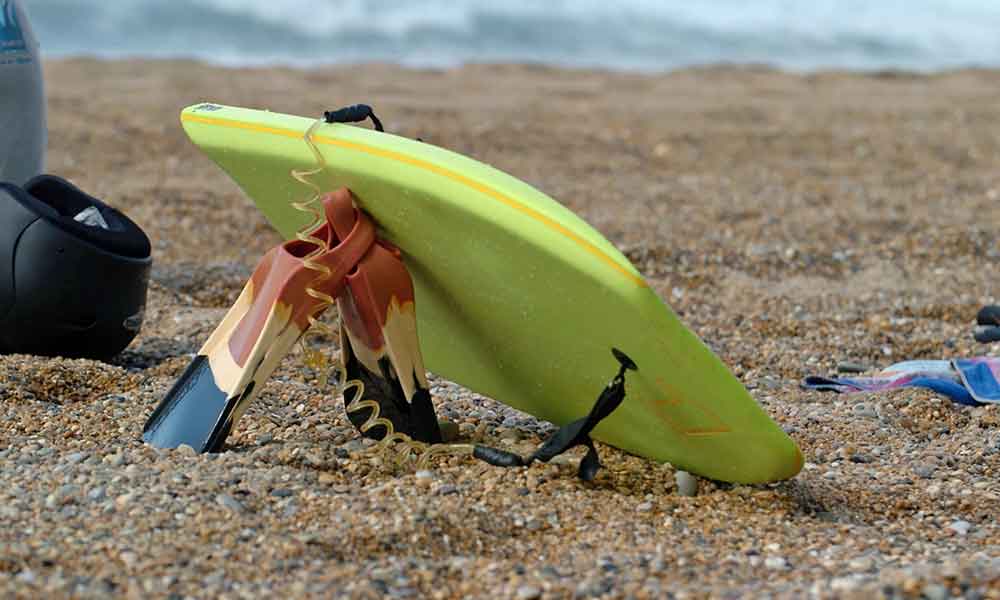Does your bodyboard feel heavier than it should? It could be waterlogged; in which case, its performance will be seriously affected.
The sooner you find and fix the issue, the sooner you can get back on the waves.
How Do I Know If My Board is Waterlogged?
There are a few simple things you can do to determine if your bodyboard is waterlogged:
Perform a Visual Check
If the board is seriously waterlogged, it will likely display signs on the outside. You may notice stains and dents caused by excess water. The formerly hard exterior may feel softer and spongier than it should.
Weigh It
Weigh your board before and after a session. If you notice any significant weight increases, it could be retaining water.
If you’ve already ridden the waves, your board feels a little heavier than it should, and you don’t want to risk another session, check the manufacturer’s details against the current weight.
The manufacturer’s details should include the weight at the time of purchase, and while some natural variations and changes are common, any notable increases could hint at a problem.
Submerge It
Placing your board in water might not seem like the most sensible solution when there is a suspected moisture issue, but it could determine the extent of the issue.
Simply fill the bathtub with fresh water and place your board inside. If there’s a problem, you’ll see some air bubbles emerge as the water from inside the board escapes and forces its way to the surface.
Place it in a Bag
If you have a large transparent bag, place your bodyboard inside and seal it before leaving the bag outside in the sunshine. The heat will force the moisture to escape from inside the board, creating condensation.
Of course, your board needs to be dry for this to work, otherwise, it will just evaporate all of the water from your latest surf.
How to Repair a Waterlogged Bodyboard
If your bodyboard’s core is waterlogged, it will slow the board down, and if that water remains, the longevity of the board will be greatly reduced.
To save yourself from buying a new board, try the following fix when your board’s core is waterlogged.
Buy A Complete Repair Kit
You can pick up a surfboard/bodyboard repair kit on Amazon. It will typically contain all that you need to repair your waterlogged board, including an epoxy resin solution and some fiberglass.
Find the Problem
Bodyboards become waterlogged when water enters through a crack or ding in the board and soaks the foam core. The first step, therefore, is to find the crack/ding.
Open It Up
Once you have located the problem area, you’ll need to cut it open using a knife and remove the damaged area.
Use tape to place a border around the affected area and make sure you don’t damage the rest of your board.
Add The Resin
Mix the resin as per the instructions on the repair kit.
Carefully pour the resin onto the damaged area, filling to the surfboard line.
Wait for the resin to harden and then sand it smooth, going slightly below the surfboard line.
Add the Fiberglass
Follow the kit instructions to prepare the fiberglass and apply it to the repaired area, followed by the sanding resin. Wait for it to cure and then sand the fiberglass.
What If I Don’t Have the Supplies/Skills?
If you don’t have the materials or desire to perform the fix outlined above, the best option is to pay for a professional repair. Depending on the value of your board, it might not be the most economical option, but if you have a good board that cost a lot of money and isn’t that old, it’s arguably the best solution.
Is There a Quick Fix?
You could simply leave your board to dry and then repair the affected area, but you’ll never know what’s going on underneath, and that damage could spread.
FAQs About a Waterlogged Boogie Board/Bodyboard
How Do I Prevent a Bodyboard From Getting Waterlogged?
There are a few steps you can take to protect your bodyboard against dings, scrapes, and general wear and tear, including:
- Store your board in a cool and dry place.
- Use board bags when transporting your bodyboard.
- Rinse your board with fresh water after use.
- Store your board flat when it is not in use.
- Don’t leave it out in the sun if you can avoid it and cover it with a board bag if you can’t.
- Be careful when bodyboarding near rocky areas.
How Does a Bodyboard Become Waterlogged?
Most bodyboards feature a dense foam core and a hard exterior. The exterior protects the interior, ensuring that the water doesn’t touch the core and soak the foam.
If the outside is dented or chipped, water will get inside and damage the core. There are many reasons why the exterior might chip, including improper storage and transportation.
How Do You Fix Bubbles on a Bodyboard?
Use a knife to carve an “x” into the bubble and carefully peel back the corners. There will likely be raised foam underneath and you will need to cut this foam back until it’s level with the board again.
Once you’ve leveled the foam, use a hot glue gun to apply glue to the flaps of the cut and the foam itself. Place the flaps back over the foam, remove excess glue, and then place a weight on top until the glue dries.
When the glue has dried you can fill the remaining exposed areas with glue and then sand everything until it is smooth.
Why Is My Bodyboard Slippery?
A protective film is added to all new bodyboards and this becomes slippery when wet. Some surfers recommended showering with your board and washing it with soap. Surfing wax will suffice, though.
Can A Foam Board Get Waterlogged?
Yes, foam boards, just like hard-tops, can become waterlogged if they are damaged and moisture gets inside.







